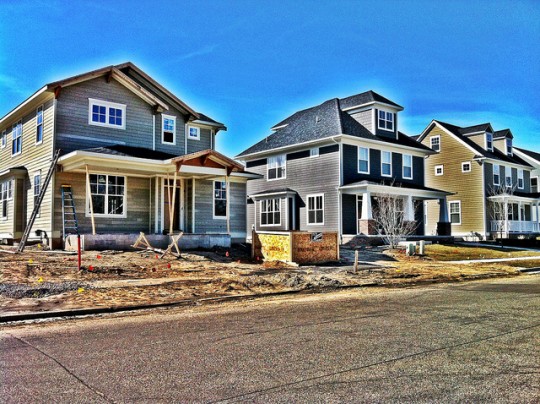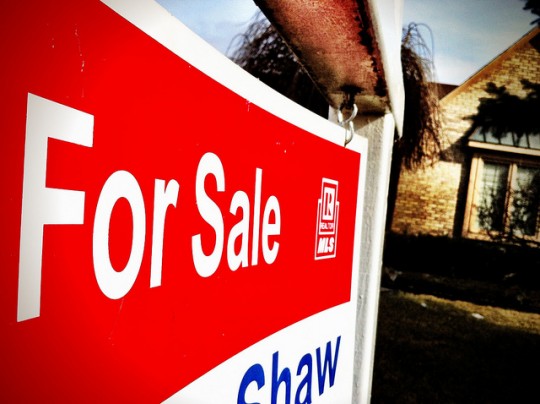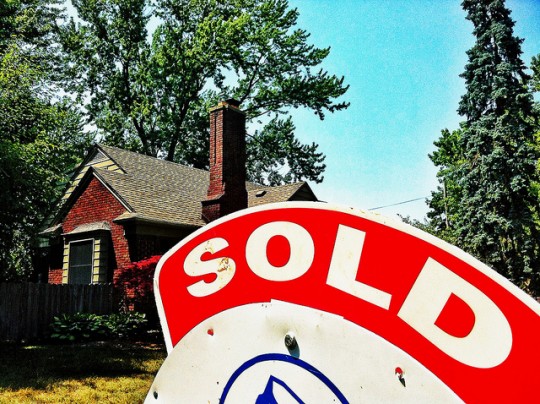Americans’ view of the economy took a hit following the government shutdown and debt ceiling debate. And, because this winter will see additional budget and debt issues – in addition to the appointment of a new Federal Reserve chair in January – the most recent forecast from Fannie Mae’s economic & Strategic Research Group sees a few more months of suppressed consumer spending and economic growth. Still, the outlook calls for growth to pick up next year, as the labor market improves and the fiscal drag wanes. Doug Duncan, Fannie Mae’s chief economist, said the November economic and housing forecast reflects many of the themes from the previous month, especially the effect of government gridlock on consumer attitudes. Sentiment toward housing also weakened because of the shutdown, despite low single-family mortgage rates and continued year-over-year price gains. More here.
Archive for November 2013
Pending Home Sales Hold Steady In October
The National Association of Realtors Pending Home Sales Index is an indicator of future home sales based on contract signings, not closings. In October, pending sales slipped 0.6 percent from the month before. Lawrence Yun, NAR’s chief economist, said weaker activity was expected. According to Yun, the government shutdown in the first half of the month sidelined some potential buyers. In fact, a recent survey found 17 percent of Realtors reported delays in October, mostly due to having to wait for potential buyers to have their income verified by the IRS before being approved for a mortgage. Despite the shutdown-related delays, pending home sales rose in the Northeast by 2.8 percent and were up 1.2 percent in the Midwest. Tight inventory in the West led to declines, while the South stayed relatively unchanged from September. Also in the report, annual existing-home sales should be nearly 10 percent higher than last year, totaling just above 5.1 million in 2013. More here.
Americans’ View Of Economy On The Mend
Gallup’s Economic Confidence Index is based on Americans’ current perception of economic conditions and whether they feel the economy is getting better or worse. Since tracking began in 2008, the index has reflected a generally negative view of the economy and where it was headed. Americans’ economic outlook hadn’t even entered positive territory until late May of this year. And, after that, public perception began to decline again, getting significantly worse during October’s government shutdown. But over the past five weeks, Americans’ confidence has been back on the rise. The index has improved by 15 points since mid-October. And, though it hasn’t returned to the peaks of early summer, it is on track to end 2013 better than it has been in, at least, six years. More here.
Builder Confidence Unchanged in November
Conducted for the past 25 years, the National Association of Home Builders Housing Market Index gauges builders’ perception of the market for newly built, single-family homes. Results are scored on a scale where any number above 50 indicates more builders view conditions as good than poor. The survey asks builders for their view of current sales, sales expectations for the next six months, and buyer traffic. This month’s results showed no change from the month before, holding steady at 54. Rick Judson, NAHB’s chairman, said given the current interest rate and pricing environment, consumers continue to show interest in purchasing new homes. But, according to Judson, Congress has failed to make critical decisions on budget, tax, and spending issues, which has eroded consumer confidence and caused some potential buyers to hold back. More here.
Existing Home Sales Slip In October
According to the National Association of Realtors, sales of previously owned homes fell 3.2 percent in October. The drop marks the second consecutive month of slowed sales numbers. Lawrence Yun, NAR’s chief economist, said a flattening trend is expected. According to Yun, low inventory is holding back sales while, at the same time, pushing home prices up. And though inventory fell just 1.8 percent from the month before, the national median existing-home price was $199,500 in October, up 12.8 percent from last year. There have now been eleven consecutive months of double-digit year-over-year increases in median home price. Still, home sales were up from last year in the Midwest, South, and Northeast. The West, where constrained inventory has held back the sales pace, was flat as compared to one year ago. More here.
Home Purchase Activity To Outpace Refinancing In 2014
Next year will mark the first in more than a decade that the mortgage market is dominated by purchase, rather than refinance activity, according to Freddie Mac’s most recent U.S. Economic and Housing Market Outlook. The outlook, released monthly, forecasts upcoming economic and housing market conditions based on current trends and data. Frank Nothaft, Freddie Mac’s vice president and chief economist, said refinance activity – as a share of total mortgage demand – will drop below 50 percent in 2014, marking a major transition in the housing finance industry and the first time since 2000 that purchase loans outpace refinancing demand. Nothaft also believes that home-sales gains and price growth will begin to moderate to more sustainable levels in the next year. Still, the forecast calls for a 5 to 6 percent increase in both sales and prices in 2014. The report also expects affordability conditions to remain strong, with mortgage rates expected to rise gradually throughout the year. More here.
Majority Of Homes Affordable At Median Income
The National Association of Home Builders Housing Opportunity Index measures the percentage of new and existing homes that are affordable to families earning their areas’ median income. According to the most recent index, 64.5 percent of homes sold between the beginning of July and the end of September were affordable for a family earning the median U.S. income of $64,400. This is down from 69.3 percent in the second quarter. David Crowe, NAHB’s chief economist, said the more than year-long steady increase in home prices is primarily responsible for recent decreases in affordability. According to Crowe – though affordability has come down from its peak in early 2012 – a family earning the median income can still afford a majority of the homes available in the current market. More here.







